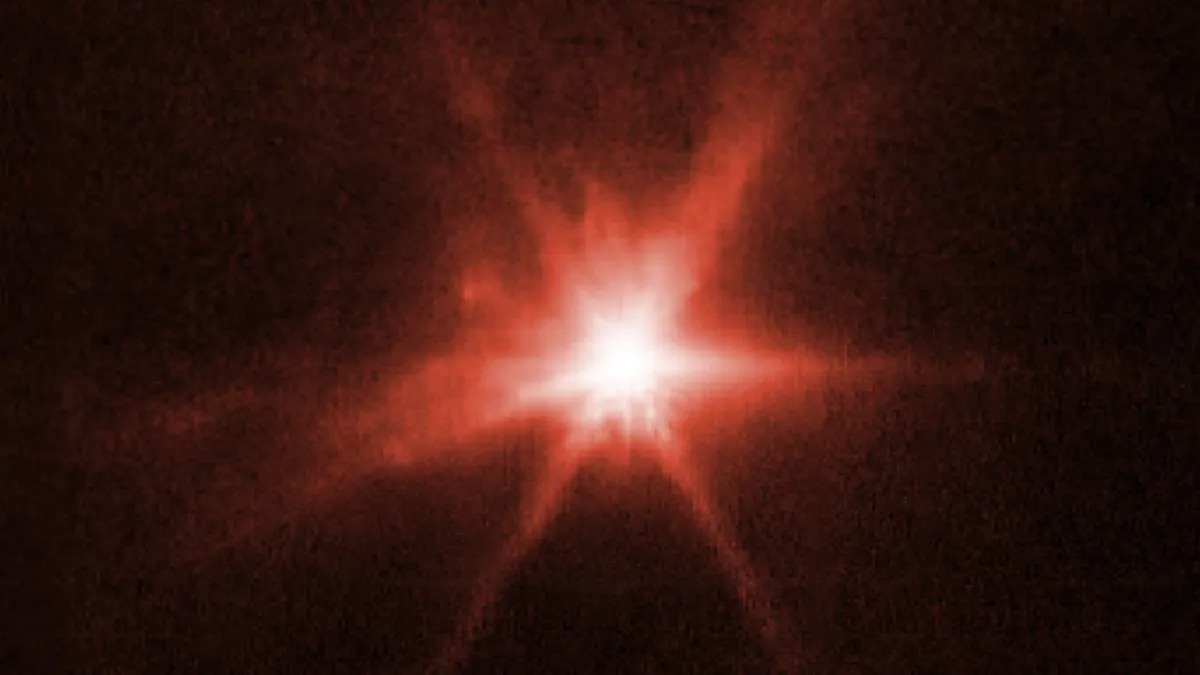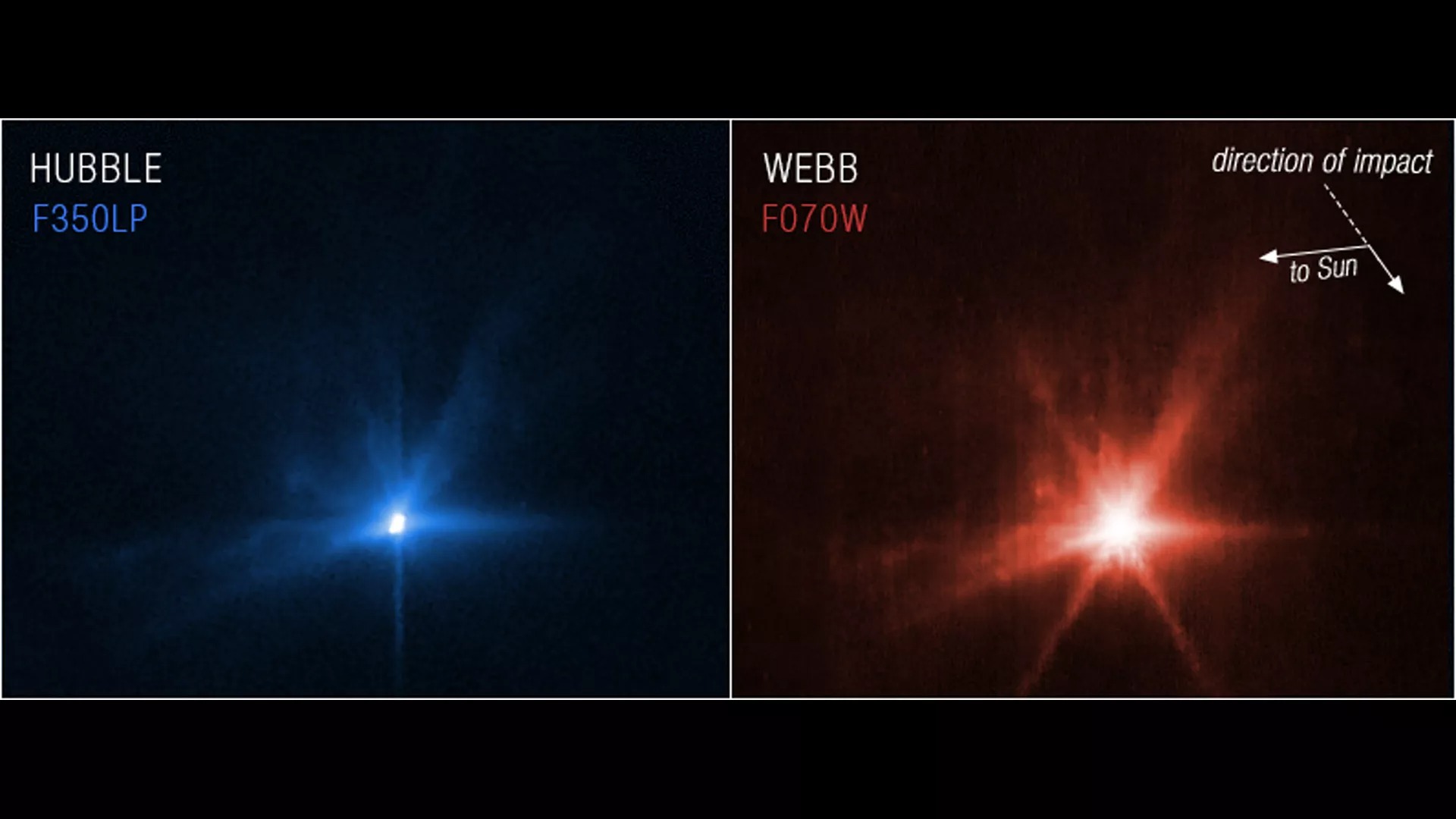The historic mission to collide the DART spacecraft with the Dimorphos asteroid, which is located 11 million kilometers from Earth, has been completed successfully. This event was watched by viewers via online broadcast, and scientists around the world – from ground-based telescopes. At the same time, NASA had a chance to record a “space accident” with the help of its most powerful space observatories. On September 29, NASA and the European Space Agency published new images taken by the Hubble and James Webb Space Telescopes, which show the epic moment of the DART collision with the Dimorphos.

Efforts to capture the moment of the collision, as well as preliminary and subsequent images of the consequences of a Dimorphos hit, mark the first time that James Webb and Hubble observed the same target simultaneously. It also made it possible to compare their photos.
Mission to save humanity
DART was designed specifically for the first ever human experiment on a targeted kinetic impact on an asteroid to see if it could change the orbit of a space rock. If successful, such a technique could someday be used to protect the Earth from a potentially dangerous asteroid or comet threatening to collide with our planet.

The images are made with different wavelengths of light. Hubble shows the effect in visible light, and JWST uses infrared observation. The bright center shows the point of contact, which has maintained an increased brightness level for several hours. Streaks of material ejected from the asteroid’s surface as a result of the collision are also visible.
Astronomers will continue to observe the effects and collect data using other telescopes located both in space and on Earth to get a better idea of how the impact changed the Dimorphos, both structurally and in terms of its orbit. Don’t worry, neither the Dimorphos nor its neighbor asteroid Didymos pose any threat to us. In fact, now, no known asteroid poses a significant threat to the Earth and humanity.
Earlier, we reported on how Google noted the collision of DART with a hidden secret.
According to Guardian
Follow us on Twitter to get the most interesting space news in time
https://twitter.com/ust_magazine

